Transforming Libraries, Building Communities
The Community-Centered Library
Julie Biando Edwards, Melissa S. Robinson, and Kelley Rae Unger
THE SCARECROW PRESS, INC.
Lanham Toronto Plymouth, UK
2013
Published by Scarecrow Press, Inc.
A wholly owned subsidiary of The Rowman & Littlefield Publishing Group, Inc.
4501 Forbes Boulevard, Suite 200, Lanham, Maryland 20706
www.rowman.com
10 Thornbury Road, Plymouth PL6 7PP, United Kingdom
Copyright 2013 by Scarecrow Press, Inc.
All rights reserved . No part of this book may be reproduced in any form or by any electronic or mechanical means, including information storage and retrieval systems, without written permission from the publisher, except by a reviewer who may quote passages in a review.
British Library Cataloguing in Publication Information Available
Library of Congress Cataloging-in-Publication Data
Edwards, Julie Biando.
Transforming libraries, building communities : the community-centered library / Julie Biando Edwards, Melissa S. Robinson, Kelley Rae Unger.
pages cm
Includes bibliographical references and index.
ISBN 978-0-8108-9181-4 (pbk.) ISBN 978-0-8108-9182-1 (ebook) 1. Libraries and communityUnited States. 2. Public librariesCultural programsUnited States. 3. Public services (Libraries)United States. I. Robinson, Melissa S., 1983 II. Unger, Kelley Rae, 1978 III. Title.
Z716.4.E39 2013
021.2dc23 2013007581
 The paper used in this publication meets the minimum requirements of American National Standard for Information SciencesPermanence of Paper for Printed Library Materials, ANSI/NISO Z39.48-1992. Printed in the United States of America.
The paper used in this publication meets the minimum requirements of American National Standard for Information SciencesPermanence of Paper for Printed Library Materials, ANSI/NISO Z39.48-1992. Printed in the United States of America.
For Martha, of course.
Foreword
The public library is in its third century as a community-funded public good. In 1876 W. C. Todd foretold the spread of the public library reading room as a means to extend civic involvement (Todd 1876). This was the beginning of the body of writing that views libraries as more than repositories of books in our democratic nation.
In Transforming Libraries, Building Communities: The Community-Centered Library , Julie Biando Edwards, Melissa S. Robinson, and Kelley Rae Unger demonstrate how public libraries can position themselves as active and vibrant centers of community life in the twenty-first century. This ambitious 2013 volume is the latest manifestation of our understanding of the evolution of the public librarya manifestation that flows from the findings of the mid-twentieth-century Public Library Inquiry (Leigh 1950). Throughout the twentieth century public library services for adults were characterized as part of the adult education movement and grew ever more inclusive.
By 1954 dozens of public library services for adults were identified by Helen Lyman Smith (Smith 1954). The concept of the library as an agency of culture began to be firmly established and the role of the library as undergirding the democratic process became more apparent (Preer 2001, 136).
As an effect of the Great Society the outreach role of the library in the community was a focus of library scholarship study in the 1960s and 1970s (Stevenson 1968; Warnke 1968; Weibel 1983). Librarians were active in the War on Poverty, establishing model programs and innovative services in storefronts, public housing, and neighborhood centers. The community-centered concept for public libraries was explored in Emerging Patterns of Community Service (Monroe and Heim 1979).
In a now elegiac reprisal of the 1954 Lyman report, Heim and Wallace (1990) explored the range of public library services in the 1980s study Adult Services: An Enduring Focus for Public Libraries on the cusp of the new Internet-based digital era. The essay Adult Services as Reflective of the Changing Role of the Public Library sees the catalyst role of the library in civic dialogue as part of a robust tradition (Heim 1986).
The American Library Association millennial presidents Sarah Ann Long (19992000) and Nancy C. Kranich (20002001) focused on community building and community engagement (Christensen and Levinson 2003, 2007). From 2000 to 2006 the Librarian at Every Table discussion list and website extended these ideas in a national dialogue. The focus was that librarians participating in comprehensive community initiatives would move to a goal of service integration.
In this third century of public library service Edwards, Robinson, and Unger seek to reposition libraries as active centers serving to build vibrant communities. They summarize the historical contributions of community-focused library services and provide a fresh, compelling series of analyses that firmly position public libraries as community centers. In Transforming Libraries, Building Communities dozens of model programs that reflect the idea of the abundant community are discussed. The book is an evaluation of twenty-first-century society and the values that define it (McKnight and Block 2010) with a library orientation that carries a mandate for convergence.
Using multiple compelling examples of real libraries in action as civic action centers, as centers for sustainability, and as cultural reflections of the community, Transforming Libraries, Building Communities shows how allocation of resources is an innovation to centralize the place of the library in the community.
Central concepts like networking for relevance are used to demonstrate that community members have a meaningful role in planning. The authors show in a persuasive manner that the best way to have a great library is to have staff spend time outside the library building making local connections that get people inside the library
The authors characterize the benefits of collaboration as helping to build human capital and social capital. They note that resilient community-centered librarians often find themselves in a position to create partnerships that extend their sphere of influence, recognizing that all are assetsindividuals and partner agencies from city planners to union members.
Rich examples of public libraries throughout the nation creating centers of civic action and models of sustainable communities provide inspirational blueprints that can be accomplished through creativity and commitment. Transforming Libraries, Building Communities is an engaging book because we know these library workers. They are just like us. We can be just like them.
Libraries can operate as facilitators of the public sphere taking on big ideas like Banned Books Week or the September Project as a means of fostering civic dialogue. They can also address closer-to-home challenges such as homelessness, hunger, workforce development, and teen parenting education. This volume provides well-documented case studies of libraries taking on projects that contribute to a community-centered vision.
The roles libraries play in preserving local history and identity are described with energy and creativity by the authors. Viewing the library as a cultural reflection of the community is a different way to enhance the librarys position as essential to a communitys identity. Archives, projects like the Nashville Civil Rights Oral History Project, the Plainfield, New Jersey, StoryCorps on minority groups, or the Bayonne Veterans History Project place the library and its staff amid deeply revered community pasts.
Diversitya topic that means people from diverse language groups, with different abilities, or with different sexualitiesis treated with sensitivity and respect. The authors are clear that for libraries to be transformed into true community centers there must be concerted and sustained commitment to outreach and inclusion of all people in the communities served.

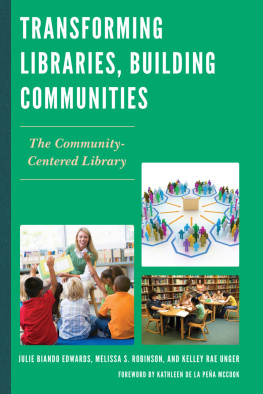
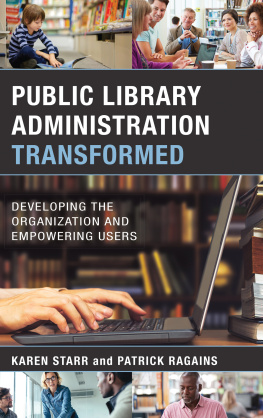

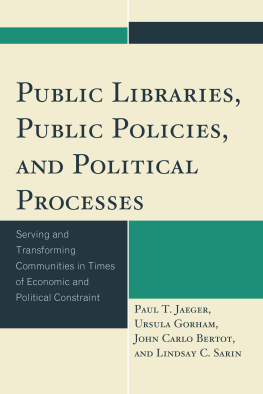
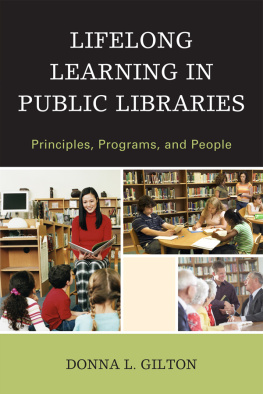
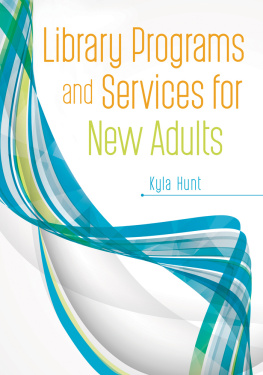

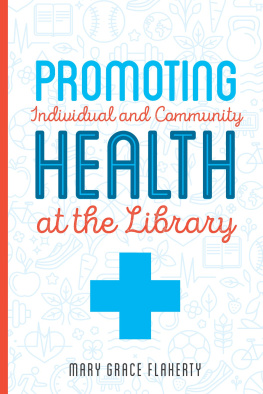

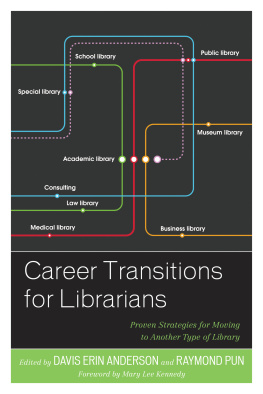
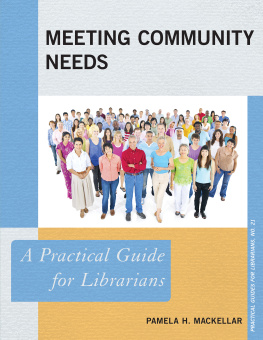
 The paper used in this publication meets the minimum requirements of American National Standard for Information SciencesPermanence of Paper for Printed Library Materials, ANSI/NISO Z39.48-1992. Printed in the United States of America.
The paper used in this publication meets the minimum requirements of American National Standard for Information SciencesPermanence of Paper for Printed Library Materials, ANSI/NISO Z39.48-1992. Printed in the United States of America.